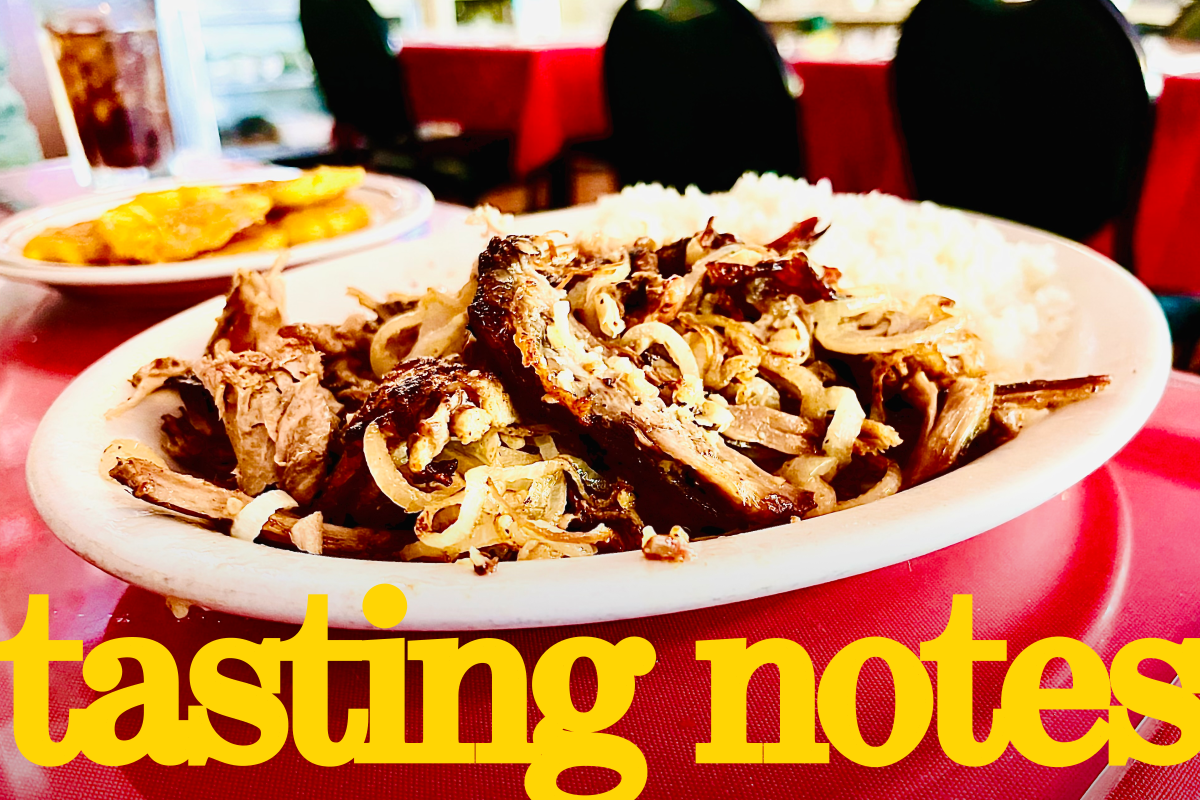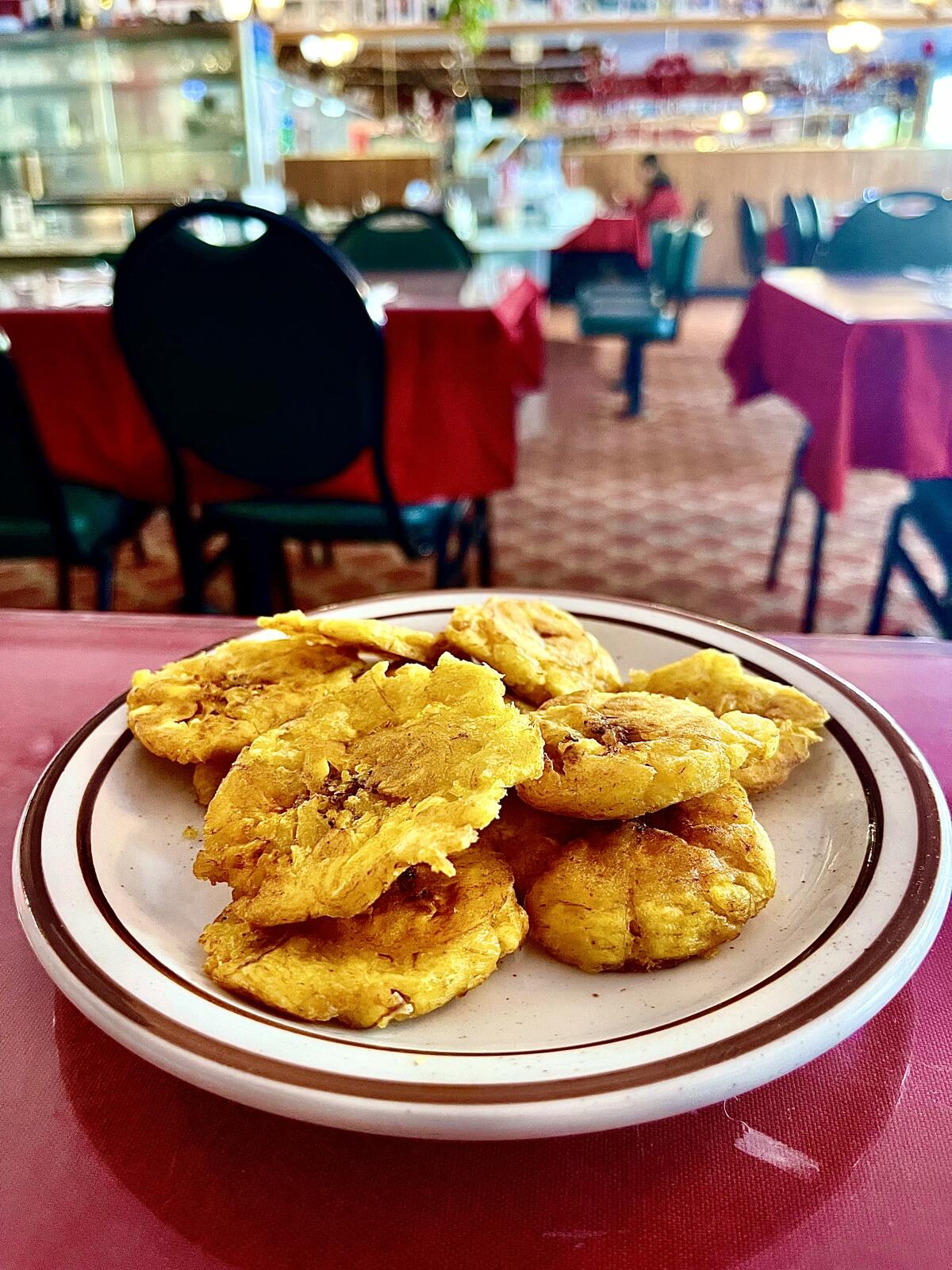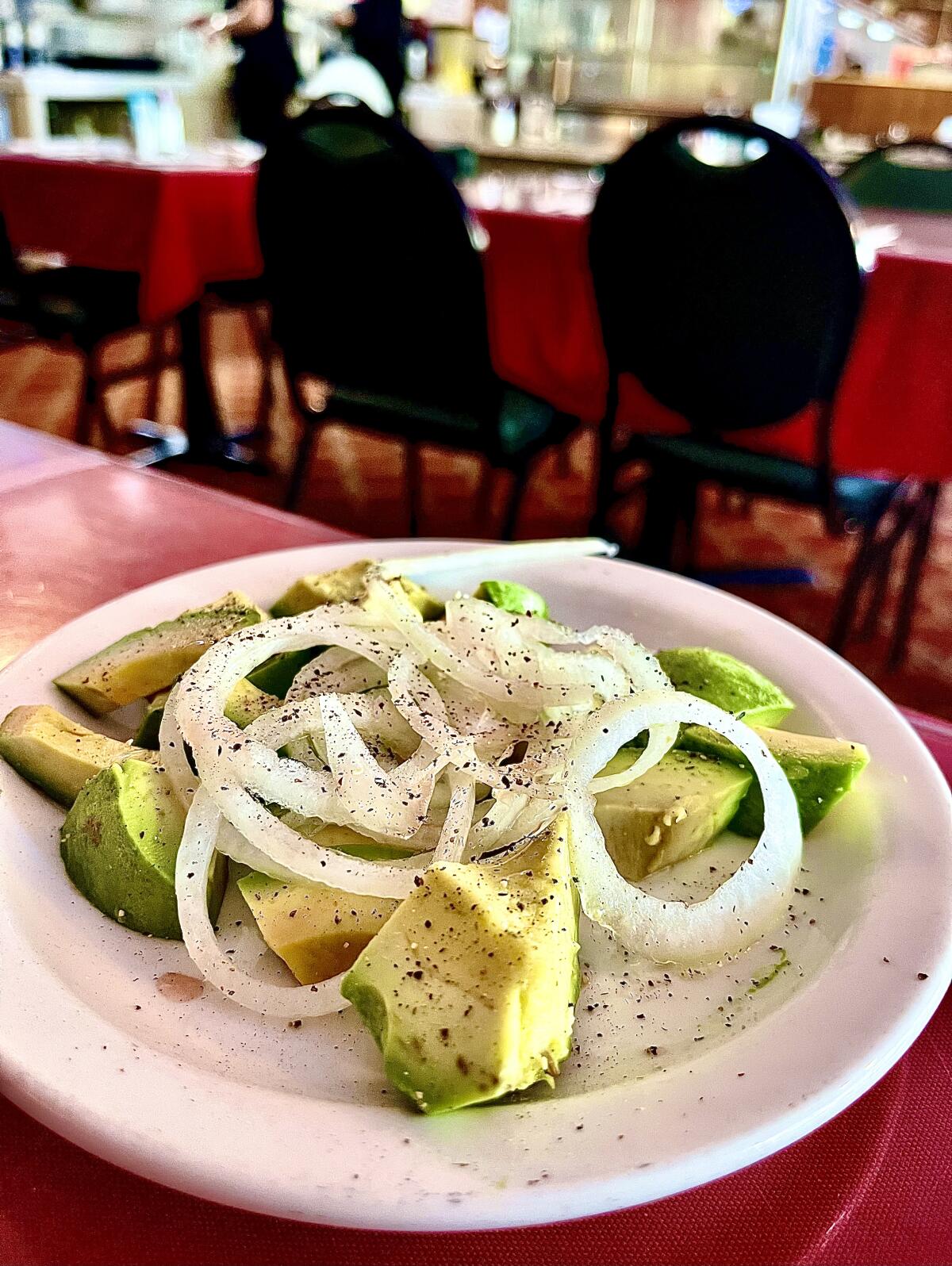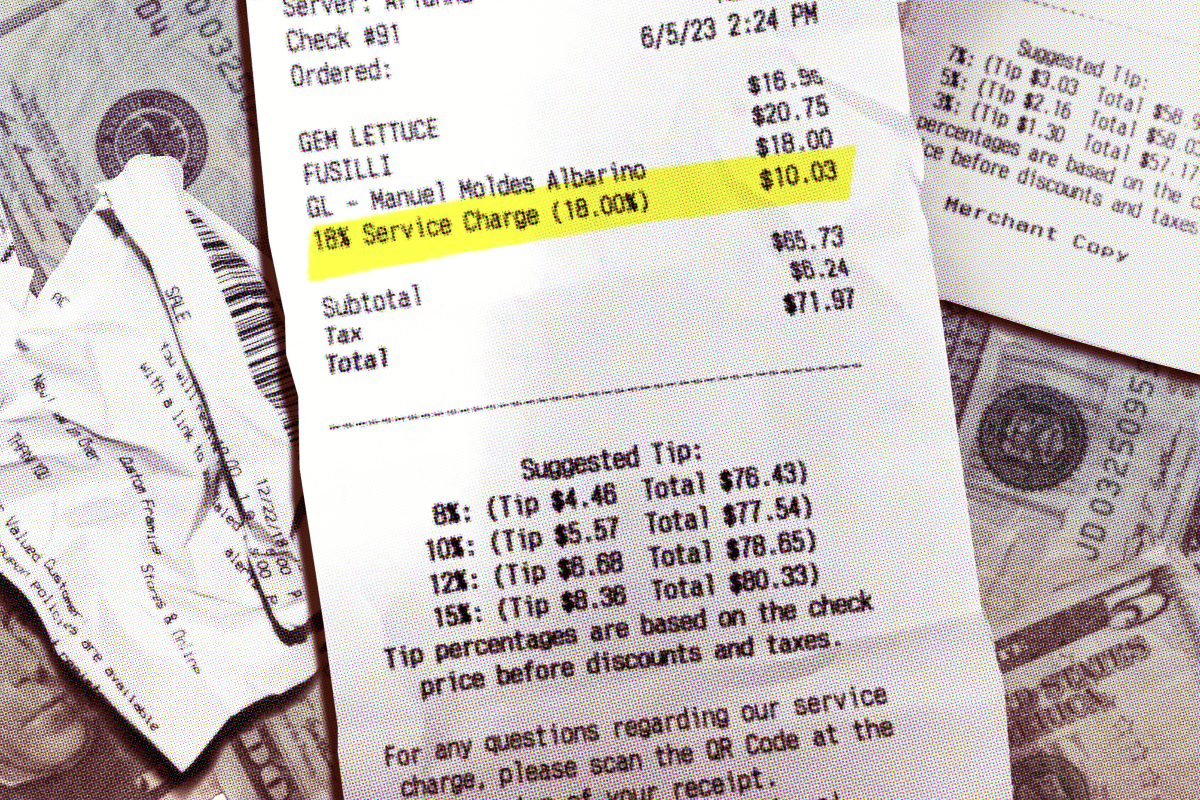At the restaurant loved by impeached Secretary Alejandro Mayorkas and the late Jonathan Gold

- Share via
Garlic and nostalgia. Service fee confusion. And a guide to Chinese scallion “big pie.” I’m Laurie Ochoa, general manager of L.A. Times Food, with this week’s Tasting Notes.
You’re reading Tasting Notes
Our L.A. Times restaurant experts share insights and off-the-cuff takes on where they’re eating right now.
You may occasionally receive promotional content from the Los Angeles Times.
Love and garlic

Love was in the air and so was garlic as I sat in traffic on Valentine’s Day and watched more than a dozen couples merrily floating in pedal-powered swan boats on Echo Park Lake. I had just come from lunch at the Cuban restaurant El Colmao, which explains the happy, heady scent of garlic that lingered with me as a reminder of the good food I’d just eaten.
It had been more than seven years since I’d been to El Colmao, which opened in Los Angeles’ Pico-Union neighborhood in 1969. But I used to be a frequent customer.
When I first started going out with (and later married) Jonathan Gold, who was this paper’s restaurant critic until his 2018 death, one of our regular spots was El Colmao, a restaurant he learned about from one of his ex-girlfriends. Earlier this week, I got a text from my friend (and Times contributor) Margy Rochlin asking if I’d seen the interview Times reporter Andrea Castillo did with embattled Homeland Security Secretary Alejandro Mayorkas, who the House voted to impeach on Tuesday. El Colmao and Jonathan were both name-checked.
“When we went out to eat,” Mayorkas told Castillo, “one of our special places was a Cuban restaurant, just short of downtown, called El Colmao. I checked on it throughout COVID, just to make sure they were making it. It’s very sentimental to me.”
Then he added, “You know who gave it a great review? [The late Los Angeles Times restaurant critic] Jonathan Gold. I grew up with him. We went to Horace Mann, which was an elementary school that drew from a very modest community. One thinks Beverly Hills, and one has images. Not for the students of Horace Mann — we had a middle income and below.”
I don’t remember Jonathan bringing up Mayorkas, but he did talk about his Horace Mann days and his love of El Colmao was undeniable. It seemed that a return visit to El Colmao was in order.
I asked Margy, who often joined Jonathan on review meals, to meet me for lunch at El Colmao. As soon as we walked into the storefront restaurant, I was flooded with memories. The dining room looked exactly the same — gold-veined mirrors topped with headshots of some of the restaurant’s more notable customers, tables draped with red cloth, sensible black chairs.
Jonathan always used to order the pierna de puerco — pork leg infused with garlic and tossed with caramelized onion — and I usually ordered one of El Colmao’s chicken dishes, often arroz con pollo or the fricassee of chicken. This time, however, I went for the pork and Margy got the chicken fricassee with dark meat.
But first, there was El Colmao’s avocado salad, which is firm chunks of avocado topped with circles of raw white onion. With it comes cruets of oil and vinegar. The arrival of the salad triggered a flashback moment because Jonathan used to treat the dressing of the salad almost as a ritual. With sweeping back-and-forth motions he would slick the avocado first with oil, then the vinegar plus salt and vigorous shakes of black pepper.

Next came El Colmao’s tostones, fried slices of green plantains that Jonathan used to salt like French fries and eat like chips. Biting into the plantains, I was thrilled to discover that the tostones were as crisp and addictive as I remembered them. Back in the day we would have also ordered El Colmao’s sweet plantains.
Margy loved her chicken fricassee in tomato sauce, which was close to what I remembered. But it was the pierna de puerco that really sent me back in time. Jonathan typically ordered the pork with moros y cristianos — rice and black beans sautéed, Jonathan once wrote, “with enough fat pork to make you cry uncle.” But I always ordered my black beans and rice separate at El Colmao. I wasn’t disappointed. The saltiness of the pork’s griddle-charred edges beautifully plays off the more neutral white rice and brothy black beans.
By the time were packing up our leftovers, Margy and I were in a contented garlic haze, full of salt, fat and memories. It won’t take me another seven years to return.
Still more service fee confusion

Senate Bill 478, which as Stephanie Breijo reports, “bans unadvertised service fees, surcharges and other additional costs that are added to the end of a bill for meals or delivery service” was passed with the intention of protecting consumers. “The price Californians see will be the price they pay,” Atty. Gen. Rob Bonta said in a statement when the bill was signed into law last year.
Instead of service fees, it’s expected that restaurants will need to raise menu prices. Caroline Styne, co-owner and wine director of the Lucques Group of restaurants and wine director of Hollywood Bowl Food & Wine, told Cindy Carcamo that the $39 Ode to Zuni roast chicken with fennel panzanella served at A.O.C. will likely to rise in price to $49 because of the law.
Will this mean that customers end up paying more to eat out if they tip 20% on a meal with newly inflated menu prices? Few customers, after all, are tipping 20% on top of the 5%, 10% and increasingly 18% service fees that have become more common in California.
Of course, this trend hasn’t been good for restaurant servers who in some cases have seen their pay drop. How much a server might take home out of the service fee pool varies from restaurant to restaurant.
One frustration for restaurant owners is that it seems delivery apps will still be allowed to charge fees as long as the costs are not hidden or added at the last minute during checkout. But it’s not clear if restaurants will get the same allowance if they inform customers about service fees on their menus and bills. With time running short before the law goes into effect in July, restaurateurs are still waiting, Breijo writes, for “clarifying materials ... expected to be published by the state.”
Styne told Carcamo that “the new law will only precipitate the closure of more restaurants, which are still recovering from the pandemic and summer strikes.”
“Restaurants are in a very tough spot right now,” Styne said. “We’ve really been under tremendous pressure … most restaurants are hemorrhaging money.”
Also ...
- Could Southern California become “the Napa Valley of coffee”? Julie Wolfson writes about the rise of California as a place to grow coffee, not just drink it. “Before 2000,” she writes, “little to no coffee was cultivated in California. Now, 14 varieties of coffee are being carefully tended to on more than 65 farms in Southern California from Santa Barbara to north of San Diego.”
- Jenn Harris goes all in on “big pie” with her guide to the best giant Chinese scallion pancakes.
- Contributor Kat Thompson wrote a guide to the best hot pot restaurants in Los Angeles, from traditional Chinese hot pot to Japanese shabu shabu to Thai jim joom.
Have a question?
Eat your way across L.A.
Like what you're reading? Sign up to get it in your inbox every week.
You may occasionally receive promotional content from the Los Angeles Times.
Eat your way across L.A.
Get our weekly Tasting Notes newsletter for reviews, news and more.
You may occasionally receive promotional content from the Los Angeles Times.




